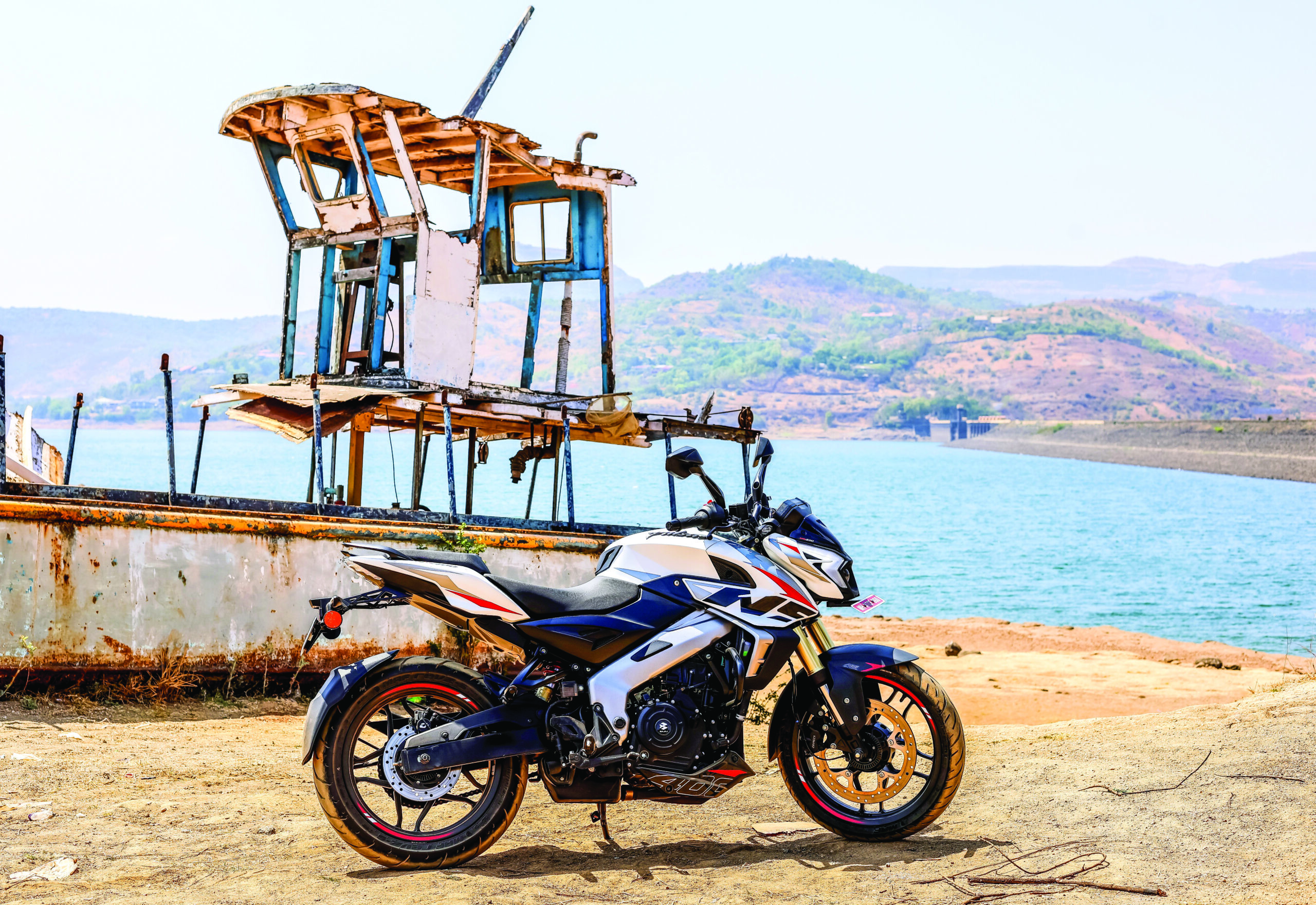
This motorcycle is actually called the NS400Z, but I’ve deliberately removed the “Z” because its presence wasn’t making any sense. The bike should’ve been called just “NS400” and that’s how it’s going to be in this article.
I need to also set the record straight here with respect to what everyone has reported about its design and technical bits. Almost every analyst, reviewer, YouTuber, enthusiast, their uncles, and their nephews and nieces, who believe that this Pulsar should’ve looked different than the NS200, are absolutely wrong. Bajaj already has a differently designed Pulsar 400. It’s called the Dominar. An NS has to look like an NS, so full marks to the designers for not diluting its identity.
However, there are more reasons for the similarity in appearance. The NS200 is the company’s most popular “Pulsar” not only in India, but globally too. Therefore, it was sheer common sense for Bajaj to make an NS400 and not, say, an N400. It’s another matter altogether that people would’ve still said the same thing (that it looks like the N250), and they’d still be wrong. Why? Because that’s not how design works.
A motorcycle has to conform to the design language of the particular series it belongs to, irrespective of its cubic capacity. It’s mostly a case of “form following function” and not because it’s convenient. So, a Yamaha YZF has to be designed in a certain manner to ensure that it stays true to its ethos, and the same goes for the BMW GS series. That’s also how manufacturers ensure their vehicles look like they belong to the same family. In fact, you’ll find that all mainstream motorcycle manufacturers do that, except Hero MotoCorp, whose stable looks like an orphanage—that’s great if you’re an NGO, but not if you’re a motorcycle manufacturer. Except the Splendors, none of Hero’s products are immediately distinguishable as Heros (no pun intended)…
Therefore, while the NS400’s design is similar enough to keep the lineage intact, there are subtle elements that tell those with a keen eye that, yes, this is indeed the biggest sibling in the NS family. The whole headlamp housing is different; the tank extensions had to be redesigned to accommodate the radiator; the 200 has always had clip-ons, whereas the 400 gets a single piece handlebar, that too hydroformed, and not a pressed unit like on the Dominar; the USD fork is thicker (as compared to the 200’s), and so is the swingarm. Most importantly, the perimeter frame on the NS400 has been lifted from the Dominar and not from the NS200. Why? Because, on the Dominar, it was reinforced (further strengthened) to take the 373 cc engine, and that’s exactly the setup the NS400 also gets. Of course, the headstock is different because the NS400 is a street fighter (NS stands for “Naked Sports”), and not a sport tourer like the Dominar 400. What’s even more interesting is that the NS400’s steering geometry is sharper than even the NS200’s! That, coupled to the shorter swingarm, has resulted in a wheelbase that’s shorter than not only the Dominar’s but the NS200’s as well. It’s needed too, because, a naked sport should be quick on its feet, and I’m happy to report that the NS400 is indeed an agile motorcycle. It’s not a Duke though. It can’t be, at this price. It doesn’t have to be, either.
See, the good chaps at Bajaj ensure that, in addition to riding in the city, highways, ghats, etc., we get to ride their motorcycles at their Chakan track as well so that we can test the bikes’ limits without killing ourselves. The idea is to provide a safe environment to us for testing; it doesn’t automatically imply that the bike under test is a track-focussed specimen. I must also add here that even the most hardcore track-oriented motorcycles seldom see trackdays in India. The real test of any motorcycle in India is out there on the road, in the real world, and that’s where the NS400 truly shines!
The suspension, which becomes overwhelmed by hard cornering on the track, gets in its own element in the city. It enjoys hammering the bad roads into submission and you’d rarely find any road irregularities big enough to unsettle this bike on the road or off it.
In other words, it’s quick to turn for a naked 400, but it’s not quite confident at high speed cornering. That’s a small price to pay for the fantastic ride quality, which will matter the most to its potential owners. Also, despite the short wheelbase and sharp steering geometry, it stayed planted as a rock at a speedo indicated 166 km/h, where the GPS showed 154 km/h—which also happens to be the top speed claimed by Bajaj. The claimed 0–100 km/h time is 6.9 s and in my solitary attempt, I could achieve a time of 7.4 s. I am 500 per cent sure that I can match, or even better, 6.9 s with a few more runs…
The NS400 will also be good for touring. Despite getting an additional tooth in the rear sprocket, this bike sits at just around 5,200 rpm in 6th at a speedo-indicated 100 km/h, and there are almost zero vibrations at this point. It definitely is a nice city bike too with good maneuverability, tractability, ride modes (which also vary ABS intensity), traction control, and adjustable levers. I just wish the engine didn’t feel this rough at city speeds. NO, it’s not vibey. It just FEELS rough. But it won’t be a decision breaker for anyone, especially when you consider that this is the most powerful motorcycle (40 PS) you can buy right now for under two lakh rupees (ex-showroom). The competitors mostly sell their 20 PS motorcycles at this price..